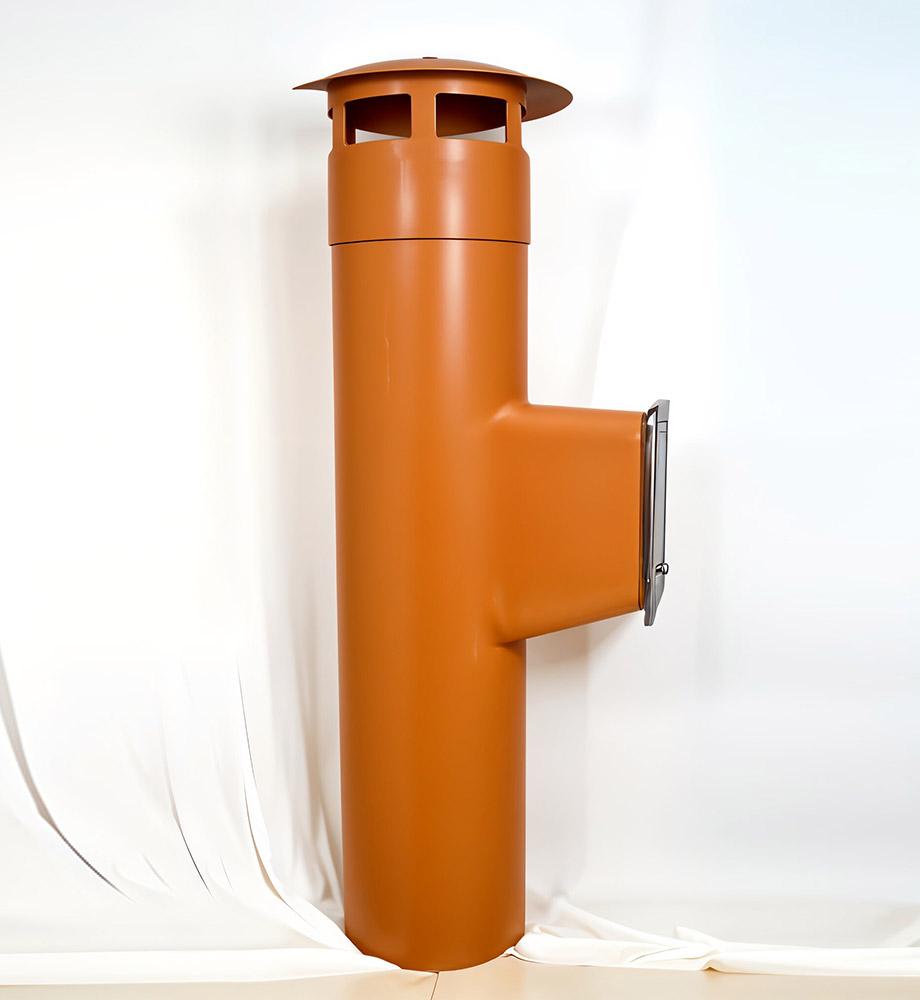Key Features
- Composite Construction: Filament-wound GRP structure (inner resin-rich liner, structural glass mat layers, and tough exterior) for a rigid yet lightweight pipe.
- Corrosion and Chemical Resistance: Excellent durability against acids, alkalis, salts and organic materials, far exceeding metals in aggressive environments.
- Smooth Inner Surface: Factory-finished bore provides low-friction passage, reducing wear on conveyed material and preventing clogging.
- Custom Shapes and Angles: Can be fabricated in vertical, inclined or spiral configurations. GRP allows complex chute geometries (spirals, bends) without welding seams.
- High Strength-to-Weight Ratio: Strong enough to support high-density materials and large column heights, yet easily handled onsite.
- Low Thermal Expansion: Minimal expansion/contraction with temperature changes, maintaining alignment in long chute runs.
Benefits
- Resilient Material Handling: FRP chutes handle abrasive or corrosive materials (e.g. slurries, grains, acids) without deteriorating.
- Easy Installation: Prefabricated modules bolt together quickly (often with ANSI flanges or band couplers), cutting onsite construction time. Lightweight panels reduce the need for heavy equipment.
- Low Maintenance: GRP does not rust or pit, meaning no sandblasting or re-coating. Its resistance to chemical attack yields a long service life with minimal upkeep.
- Safety: Smooth flow profile and enclosed design minimize dust and spillage. Materials slide gently, reducing breakage of fragile solids.
- Cost Savings: Long life and low downtime lower total cost of ownership compared to steel or concrete chutes, especially in corrosive or wet applications.
Applications
- Bulk Material Conveyance: Transporting ores, aggregates, cement, grains, fertilizer or coal by gravity. GRP chutes are used in mining conveyor drop points, cement plant material transfers, and agricultural seed handling.
- Wastewater Treatment: Sludge and grit chutes in treatment plants, where corrosion from wastewater precludes metal pipes.
- Chemical Plants: Disposal or transfer of caustic/byproduct streams, where chemical resistance is paramount.
- Food and Pharma: Hygienic processing lines requiring inert, non-toxic surfaces (e.g. sugar, salt or powder transfers).
- Rainwater/Stormwater Drainage: Long-span inclined drains and scuppers, leveraging GRP’s durability in outdoor exposure and salt-laden environments.
- Custom Projects: Any application needing a lightweight, corrosion-proof chute solution (e.g. dredged sediment pipelines, acid spill containment).
Technical Specifications
- Diameters: Commonly 150 mm to 2000 mm (6″–80″) and larger; lengths typically 3–12 m per section. Custom diameters to match flow requirements.
- Pressure Rating: Usually gravity-flow (0–1 bar), but FRP chutes can be designed for pressured systems if needed (up to a few bars with proper lamination).
- Material Grades: Vinyl ester or polyester resins with C-glass or E-glass fiber reinforcement. Options include fire-retardant resins per ASME RTP-1.
- Liner Options: Can include specialized abrasion-resistant or smooth thermoplastic liners if abrasive wear is critical.
- Standards: Fabrication to ASTM D2996 (wet lay-up) or ASTM D4097 (filament-wound) FRP pipe standards. Flange drilling to ANSI, BS, or DIN as required. UV-stabilized gelcoat or paint on exterior for weather protection.
- Temperature Range: Typically –50°C to +80°C service, depending on resin. Hot-vinyl ester formulations extend range.
Unique Selling Points (USPs)
- Tailored Engineering: GRP chutes can be custom-engineered (e.g. helix angle, steep drops) for each project, unlike off-the-shelf metal alternatives.
- Integrated Systems: Available as complete chute modules (including support framework and access ports) for turnkey installation.
- Enhanced Flow Efficiency: The inherently smooth GRP surface ensures steady gravity flow, preventing material hang-ups. This has proven crucial in mining/grain sectors – FRP chutes are “designed with a smooth inner surface that facilitates the smooth flow of materials without causing excessive wear”.
- Longevity: By choosing GRP, facilities benefit from decades of trouble-free service. Industries like food processing, mining and agriculture trust FRP chutes for “long-term reliability”.
- Value-Added Service: Many suppliers offer full design, fabrication and testing (hydro or vacuum) under one warranty, ensuring compatibility and performance that outcompetes piecemeal metal solutions.

